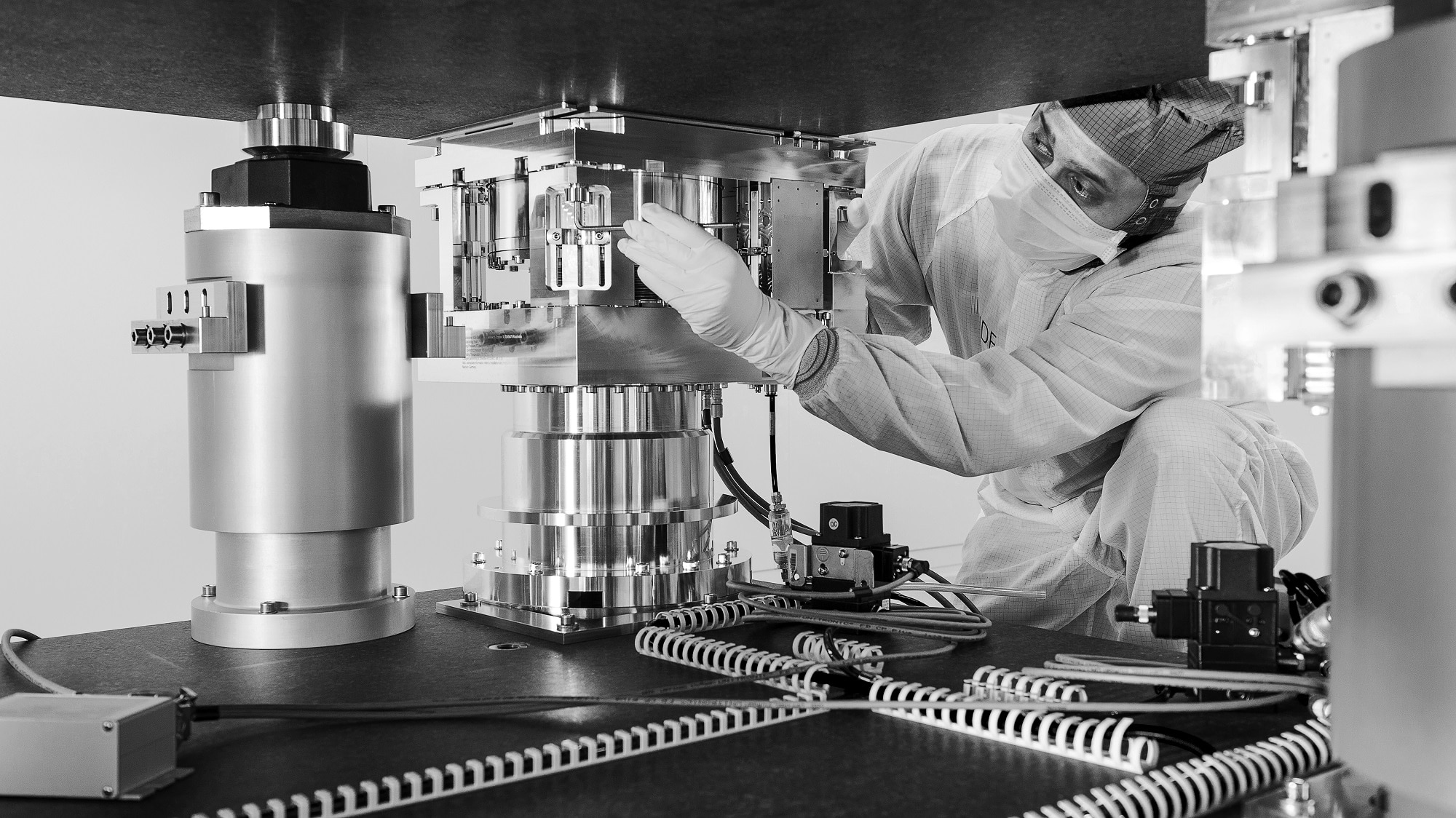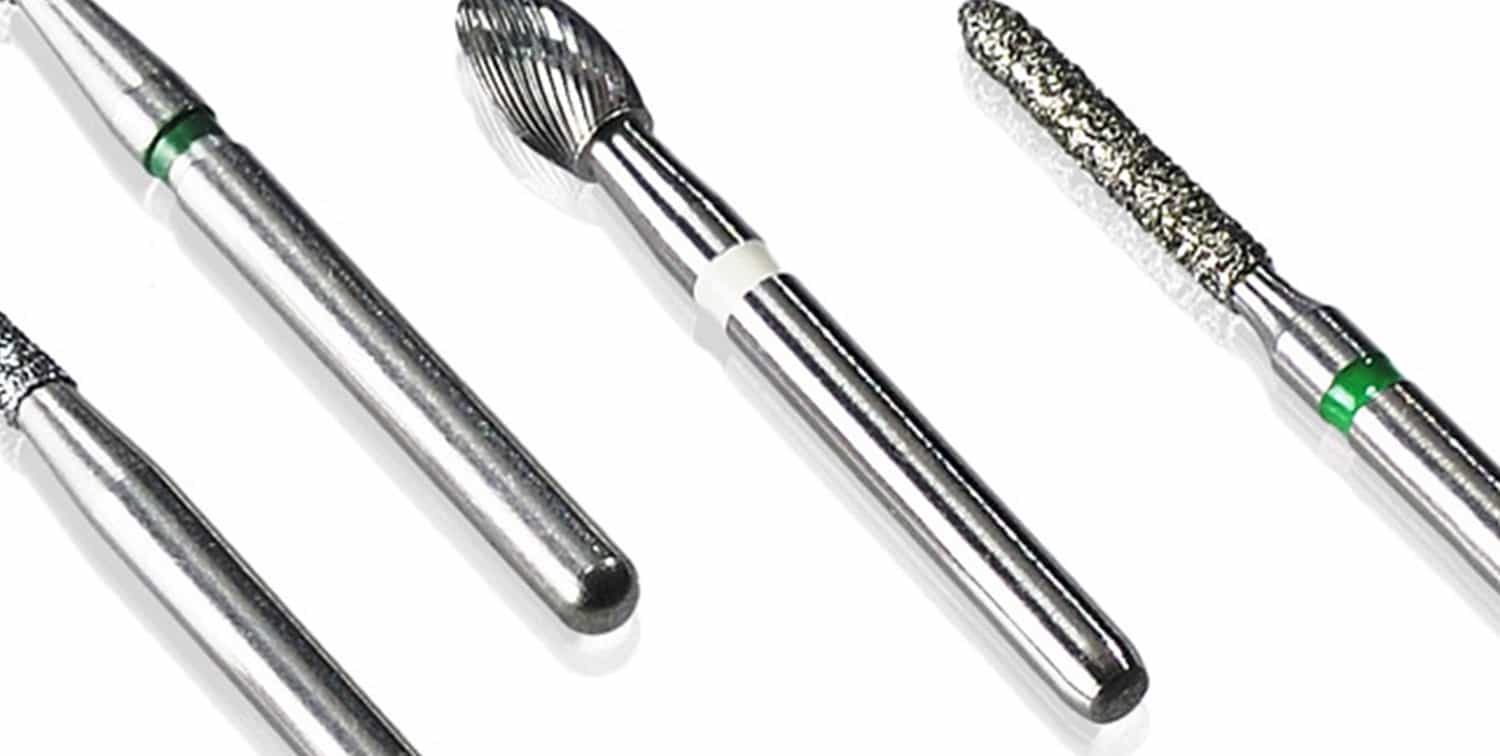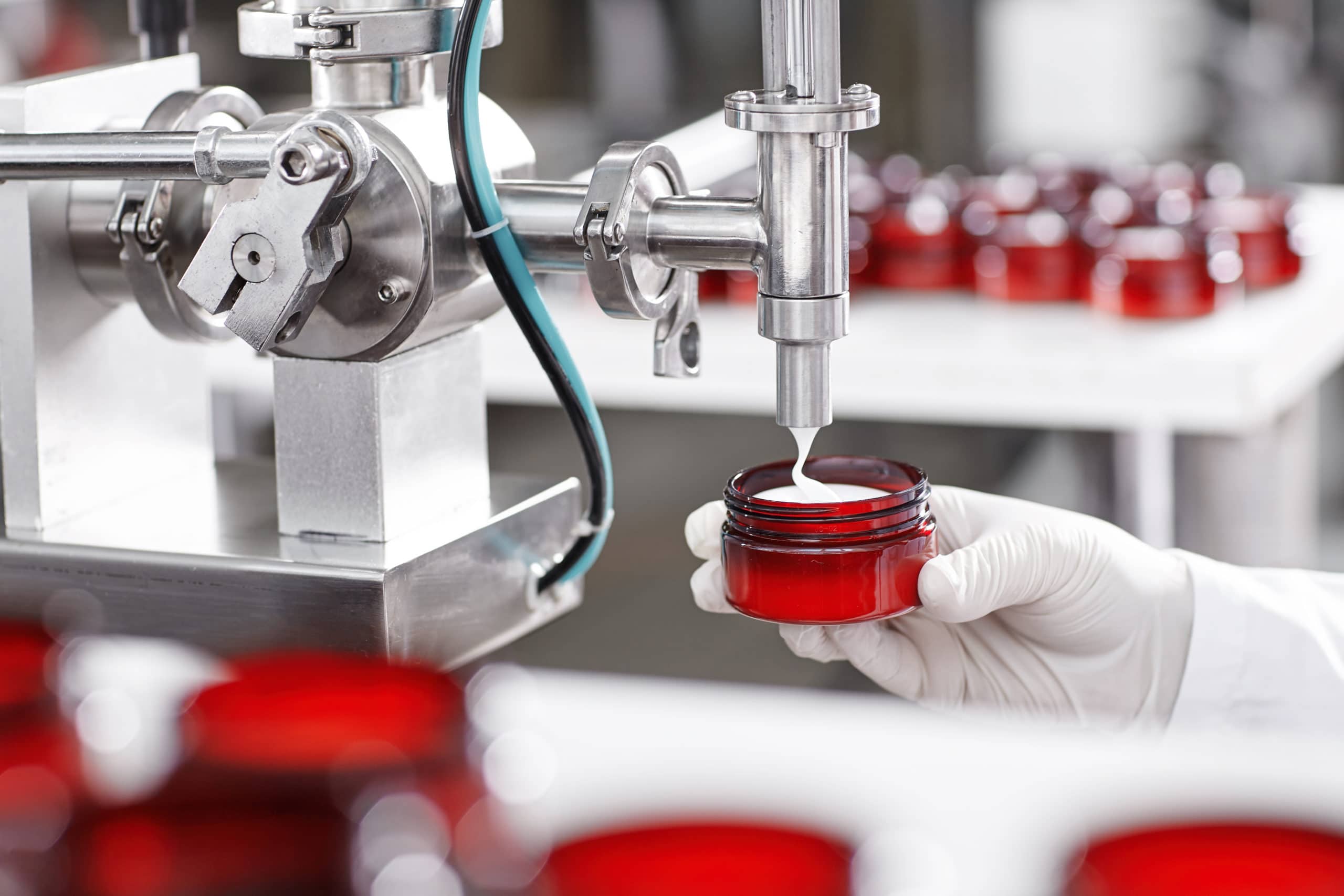vacuum brazing
what is vacuum brazing?
Vacuum Brazing is a process that creates high quality joints under temperatures from about 800°C to 1150°C in a vacuum atmosphere. This also allows for the joining of different materials like for example ceramic to steel.
the process
Basically, brazing is a process that combines elements with the use of a brazing material. Prepared elements with applied brazing material are placed in a vacuum furnace and heated up to brazing temperature (from 800 to 1150°C) which is higher than the liquidus temperature. At this temperature, the parts are held for a short time (10 min) and then are slowly cooled to solidus temperature. This also allows for the joining of different materials like for example ceramic to steel.
During the process, the appropriate level of vacuum needs to be kept. Brazing in a vacuum furnace can also take place in a protective atmosphere, most often an argon atmosphere.
in short
A typical vacuum brazing treatment takes place as follows:
- Cleaning the parts to be brazed
- Assembly of braze (foil, thread, paste, powder, galvanic layer) and products
- Setting up the part on the furnace frame
- Furnace process (steered by microprocessor)
- Unpacking and visual inspection
- Testing / final check
The following aspects play an important role:
- cleaning the parts to be brazed
- the availability of clean assembly rooms
- the use of high vacuum furnaces
- the process variables
- the loading tools
- the testing facilities
fields of application
The most important properties of vacuum brazed connections are as follows:
- Very strong and reproducible joints. Equal to or even stronger than the basic material.
- By using precious brazing material, corrosion resistant joints are created.
- Joints can be exposed to relatively high temperatures. (< 800 ºC)
- Clean process. Products remain metallically blank.
- Brazing without flux agents. Therefore, no undesirable surface reactions.
- Very clean, hygienic gap free joint. Important for the food or medical industry.
- Vacuum tight/leak proof joints.
- Possibility of joining various materials with each other (e.g.: metal-ceramics).
- Brazing and hardening possible in a single process.
- Parts can undergo practically all hardening processes after a brazing treatment.
- High level of construction freedom; thick/thin is possible, large surfaces can be joined.
- More than one joint can be created in a single process. The creation of complex products is possible
- High level of dimensional stability possible, no or practically no distortions.
groundbreaking industries we serve
process locations
Any questions? Contact us directly or select a process location near you.
Manchester (Connecticut)
United States 41.8003737-72.5057255 HT-AST-CT@aalberts-st.us (860) 432-1840 show locationDunningen
Germany 48.2249668.5003521 info.dunningen@aalberts-st.com +49 7403 92907-0 show locationEindhoven
the Netherlands 51.47035245.419001 info.eindhoven-heat@aalberts-st.com +31 40 266 3000 show locationGaildorf
Germany 49.01621959.7588191 info.gaildorf@aalberts-st.com +49 7971 96980 show locationGoffstown (New Hampshire)
United States 42.9936399-71.5222791 HT-AST-NH@aalberts-st.us (603) 945-3761 show locationGreenville (South Carolina)
United States 34.8319956-82.2940535 HT-AST-Garlington@aalberts-st.us (864) 213-9310 show locationKalisz
Poland 51.736470518.03159 info.kalisz@aalberts-st.com +48 798 804 003 show locationKehl
Germany 48.500157.82006 info.kehl@aalberts-st.com +49 7854 96470 show locationWerther
Germany 52.085558.42509 info.werther@aalberts-st.com +49 5203 97405 show locationGreenville (SC) Pelham
United States 34.8531151-82.2386712 HT-AST-Pelham@aalberts-st.us (864) 913-9310 show locationLetchworth
United Kingdom 51.9887569-0.2038797 info.letchworth@aalberts-st.com +44 1462 472100 show locationUnsere Verfahren
Wir bieten weltweit alle Arten von Wärmebehandlungsprozessen an. Unsere Anlagen sind logistisch eng miteinander verknüpft, so dass Ihnen alle Verfahren zur Verfügung stehen. Erfahren Sie mehr zu unseren Wärmebehandlungsverfahren.
Heiß-Isostatisches Pressen (HIP) dient der Beseitigung von Porosität. Sie benötigen bei Lötverbindungen eine hohe mechanische Haltbarkeit und Unempfindlichkeit bei hohen Temperaturen? Wir bei Aalberts surface technologies bieten die Lösung durch Hartlöten (brazing).
Polymerbeschichtungen können auf viele Grundmaterialien aufgebracht werden und bieten lang anhaltenden Schutz. Sie sind mechanisch besonders gut mit dem Untergrund verankert und bieten verbesserte Gleiteigenschaften und/oder hohe Verschleißfestigkeit.
Mit 40 Jahren Erfahrung in der kontinuierlichen Veredelung von reel to reel können Sie sich auf Aalberts surface technologies verlassen, um innovative Lösungen zu finden. Unser Service umfasst Trommelgalvanik, kontinuierliche selektive Galvanik und Gestellgalvanik.
Fast alle metallischen Grundwerkstoffe können mit unseren selbstentwickelten und patentierten Verfahren durch Oberflächenbeschichtungen in ihren Eigenschaften optimiert werden, egal ob sie besonders hart, glatt, verschleißfest oder korrosionsbeständig sein sollen.

Discover our services
We offer all types of heat treatment processes. Our facilities are closely interlinked in terms of logistics, which means that all processes are available to you. For a complete list and description of heat treatment technologies please select the button.
Hot isostatic pressing (HIP) is used to eliminate porosity. Do you need high mechanical durability and insensitivity to high temperatures for solder joints? We at Aalberts surface technologies offer the solution through brazing.
Polymer coatings can be applied to a wide variety of base materials and offer long-lasting protection. They are particularly well anchored mechanically to the substrate. Additional enhancement layers allow non-stick coatings to be combined with improved sliding properties and/or high wear resistance.
With 40 years of experience in continuous reel to reel finishing, you can depend on Aalberts surface technologies to find innovative solutions that other companies might say are impossible. Our service includes barrel plating, continuous selective plating and rack plating.
Almost all metallic base materials can have their properties optimised by surface coatings using our proprietary and patented processes, regardless of whether they should be particularly hard, smooth, wear-resistant or corrosion-resistant.

The Aalberts websites use cookies (read more) to analyse website usage and improve usability. We also use third party tracking-cookies to measure user preferences, enable content sharing on social media and interest-based advertising. If you hit 'accept' you allow to us to place the different types of cookies.
privacy overview
| Cookie | Duration | Description |
|---|---|---|
| cookielawinfo-checkbox-analytics | 1 year | This cookies is set by GDPR Cookie Consent WordPress Plugin. The cookie is used to remember the user consent for the cookies under the category "Analytics". |
| cookielawinfo-checkbox-necessary | 1 year | This cookie is set by GDPR Cookie Consent plugin. The cookies is used to store the user consent for the cookies in the category "Necessary". |
| cookielawinfo-checkbox-others | 1 year | This cookie is set by GDPR Cookie Consent plugin. The cookie is used to store the user consent for the cookies in the category "Others". |
| cookielawinfo-checkbox-performance | 1 year | This cookie is set by GDPR Cookie Consent plugin. The cookie is used to store the user consent for the cookies in the category "Performance". |
| elementor | never | This cookie is used by the website's WordPress theme. It allows the website owner to implement or change the website's content in real-time. |
| Cookie | Duration | Description |
|---|---|---|
| cookielawinfo-checkbox-functional | 1 year | The cookie is set by GDPR cookie consent to record the user consent for the cookies in the category "Functional". |




